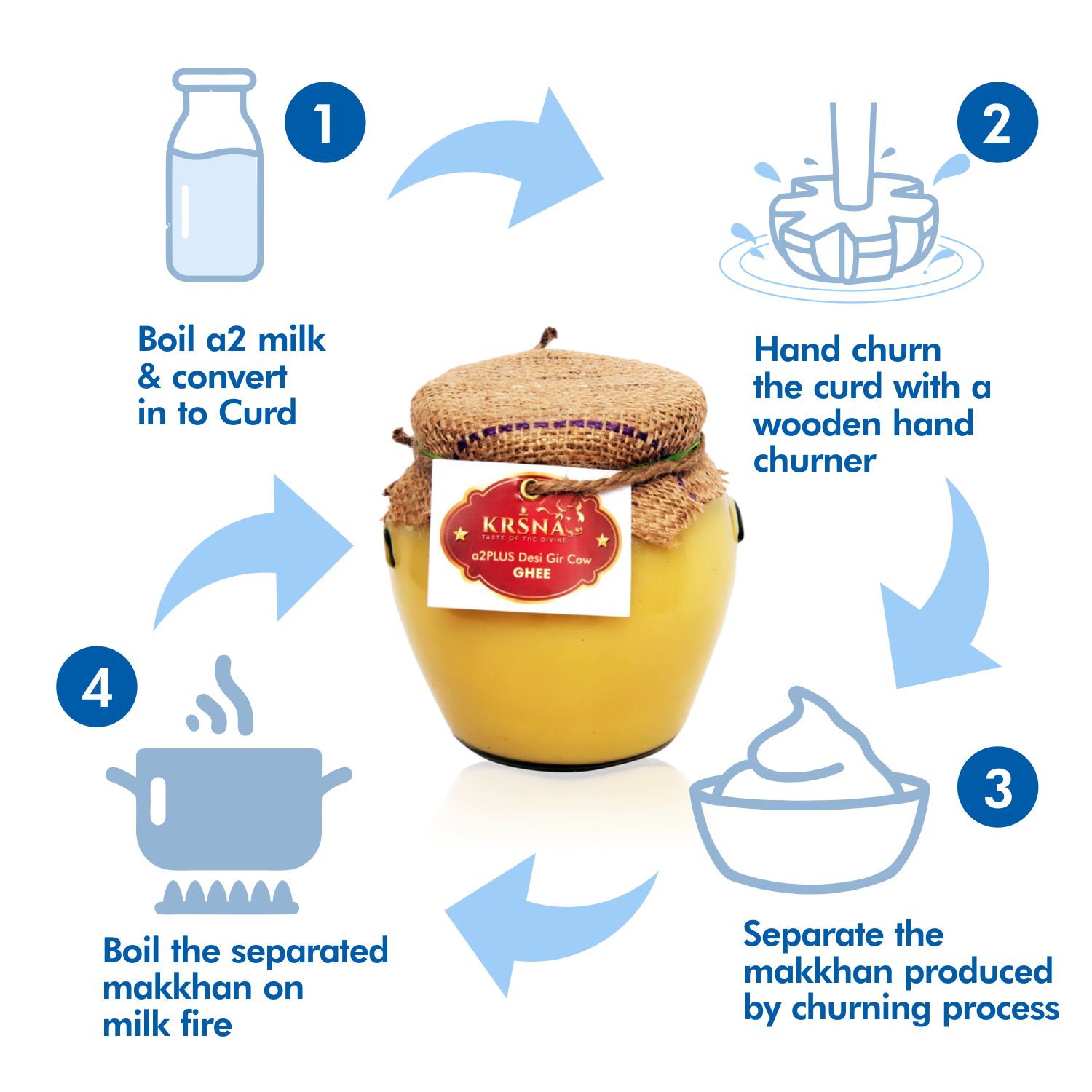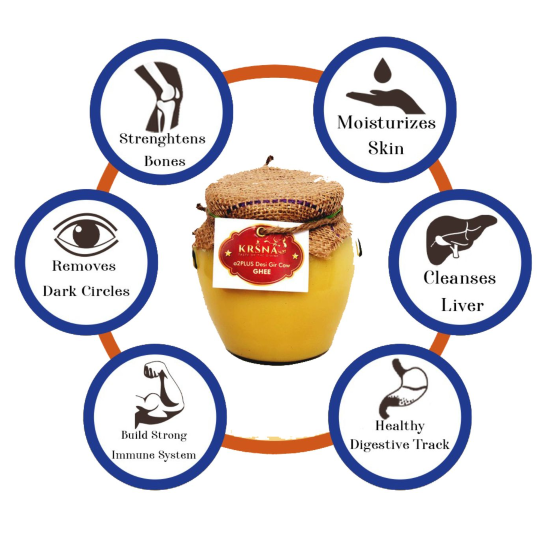Human mother's milk has only a2 protein. a2 milk is original Indian cows' milk that has a2 β-casein protein chain (Proline), instead of a1 β-casomorphine (BCM) protein chain (Histidine) which is called a1. Pure Indian cows, having protected blood line give only a2/a2 allele in their milk. So Gir Cow's milk having a2/a2 protein is close to mother's milk. Imported cows, which are genetically modified in the Europe for flesh, have a1/a1 protein in their default milk. The cross bred cows (losing its breed purity) give a1/a2 protein milk. All those milks, which don't speak of 'a2' have either a1/a1 or a1/a2 protein chains. This can be known by putting milk to 'protein allele' test.
a2 β-casein is the protein that has been produced from the cows, since before they were domesticated over 10,000 years ago. It has no known negative effects on human health. In the past few thousand years, a natural point mutation occurred which resulted in a proportion of cows of European breeds producing a casein variant called a1 β-casein. This happened because the gene encoding β-casein was changed such that the 67th amino acid in the 209 amino proteins was switched from proline to histidine. This mutation caused a substantial increase in the milk production of such mutated mammals. Histidine promoted cleavage of the 209 amino acid chain at 67th amino acid position due to which beta casomorphine-7 (BCM 7) was formed in human digestive system after cleavage. In simple words, BCM 7 is the peptide released by digestion of casein. This BCM 7 is harmful to human body in a number of ways. Consumption of BCM-7 causes alterations in gastrointestinal functions and increases the inflammation in the gut. Slowly, this protein variant became dominant in milk which resulted in a1 milk. This new kind of β-casein that was created came to be known as a1 β-casein which is found in the milk of many crossbred cows such as Holstein Friesian and Jersey cross-bred cows in India.
a2 Milk doesn't have Histidine protein chain of a1 milk, which is the root cause for the beginning of all health disorders such as Obesity, Insomnia, Nervous debility, Indigestion, Lactose Intolerance, Blood Pressure, Diabetes, Autism, Infertility, Male Impotency, Early Female Maturity, PMS issues and even certain Cancers.
Physical Appearance: a2 Cows have a hump on the spine, tail touching up to ankles and tail end hairs touching almost ground, fully grown horns, fully flapped skin below the throat, and fully curved back buttocks. a1 cows have a flat spine, half grown tail, short horns, tight skin below the throat, a 900 back buttocks.
Phisiological: a2 Cows have 4 intestinal stomachs, a specific vein connecting the horns-hump-4th intestine-milk line. a2 Cows keep the food in the 1st Stomach and brings it back into mouth to chew it fully (jugali in Hindi) and then sends to 2nd Stomach and then to the 3rd The Large Intestine and then to the 4th the Small Intestine. a1 cows and buffalos have only 3 intestines and since they lost the hump in the process of mutation, there is no connecting vein in them.
Behavioural: a2 Cows behaviour is very close to that of humans. They are sensitive, active, recognize their children/mother/father/care-taker/master. They don’t lay down on dirt and damp surfaces. They keep standing in rain. They don’t tend to be in water for long. They love cleanliness. a1 Cows and Buffalos are tangent (opposite) to this behaviour.
The structure of a2 milk is very close to that of Human milk and hence is The Best next to Mother’s milk. a2 Cows produce their milk for their babies and hence they modify the fats and solids in their milk suiting to the digestive abilities of its babies. Hence it is more suitable for all ages and especially children and even the new born.
Gene mutation and Cross Breeding in case of Gir is The Best compared to Other Indigenous Cows. Gir breed is much protected from cross breeding and for many ages the breed has not gone out of the generations’ care and bringing up and even breed upgradation. This is the reason why the Brazilians picked up Gir first between 1857-1860. Ofcourse they had taken other Indigenous breeds also. But they could develop only Gir as ZEBU, because of its purity origin.
KRSNA is a family belonging to the Origin of Gir. The Gir cows at KRSNA are hand picked from the Gir forests of Gujarat, and also taking care of their purity by maintaining Pedigreed Bulls for natural insemination. KRSNA is the first firm to get the official authorization to bring Gir breeds outside Gujarat. Hence KRSNA Gir COW MILK is better than other a2 milks available.
KRSNA offers milk without any processes, such as milk collection from different places, mixing up all milks, cream separation, SMP mixing, homogenization, preservations etc., which mostly common in all manufactured milks.KRSNA a2 Gir Cow Milk comes straight from the udders of pedigreed Gir Cows within 4-6 hours of milking. However, it is transported in Reefer Vehicles (Air Cooled) to protect the shelf life before delivery.
To protect the purity and freshness, KRSNA uses only sterilized glass bottles every time and the bottles are tamper proof sealed and KRSNA encourages customers to reject deliveries with the seals are tampered with.
KRSNA primarily focuses on RAW milk without any process. In such cases the shelf life is 6-8 hours after milking and before boiling. Hence KRSNA educates the consumers to boil the total milk received at a time before refrigerating at home. KRSNA also offers pasteurised whole milk, where the shelf life is up to 12 hours without refrigeration and up to 5 days under refrigeration and up to 15 days on deep freezing.
Absolutely NO. in fact regular consumption of KRSNA a2 Gir Cow Milk (boiled) regulates the metabolism and balances the body weight and also the structure. A daily consumption of 200 ml of KRSNA a2 Gir Cow Milk (hot) mixed with 2 spoons of traditionally made a2 Ghee, a spoon of honey and a half spoon of Haldi has proved in regulating body weights and also improving the digestive and nervous systems. It also solved the problems in early maturities, Pre and Post Menstruation issues, Maintaining the Menstruation Cycles in females, and even autism issues in children and Insomnia issues in teenagers.

KRSNA believes, follows and propagates only time-tested traditional processes and doesn’t follow shortcuts. KRSNA makes GHRITHA in fact not GHEE. GHEE (the English name) is just a clarified cream (not even butter), whereas GHRITHA is boiled white butter churned out of curds made out of boiled and cultured a2 milk. The process of boiling milk, culturing curds, churning forward and backward to make white butter and boiling such white butter, when done in the traditional way (3.30 am to 5.30 am), transforms the cells to give medicinal values.
However, one may put KRSNA a2 Gir Cow Ghee to tests on Total Carbohydrates, Monounsaturated Fatty Acids, Trans Fatty Acids, Polyunsaturated Fatty Acids, Saturated Fatty Acids, Energy, Vitamin A, Calcium, Phosphorus, Sodium, Milk Proteins, HDL and LDL Cholestrol etc., as per the specifications laid down for any testing methods. KRSNA also publishes the periodic test reports on the website.
Many Doctors (Allopathic and Ayurvedic) use and also recommend KRSNA a2 GIR COW GHEE, for its Authenticity.
KRSNA make GHRITHA and not GHEE. KRSNA GHRITHA (GHEE) can be used for any longer time, as long as it is used with dry spoons and not exposed to wet conditions. The medicinal values of GHRITHA multiply by time and hence Herbal Ghrithams are preferably made from aged GHRITHA (GHEE). However, if KRSNA a2 Gir Cow Ghee is used for culinary purposes, one may boil it on low flame once in 3 months, to get backs its flavour and taste. We label 6 months shelf life as per FSSAI norms.
The purity of the Gir Breed, Herbal feeds, The processes, The dedication and The commitment at KRSNA makes it special and medicinal apart from culinary and spiritual values. The processes in making Traditional Ghrithams is not mechanical, but are Manual, and it needs about 26-32 liters of milk to make 1 liter Gritham (Ghee). So it is worth its cost.

It is the HDL and LDL cholesterol contents and Unsaturated Fatty Acids that contribute or lower the risks. Any a2 Ghee when made in the traditional methods, lowers all the types of health disorders and improves the heart functions apart from and mainly the Brain functions which control all the functionary organs of human body.
KRSNA produces all the vegetables, leafy vegetables, fruits and exotics in Permaculture, Soil Culture, Soilless Poly Culture and Hydroponics as well. The Farming method is prescribed based on the crop variety chosen and its suitability to the method chosen.
At KRSNA plants are an integral part of our family and we love them as we love our cows and children. Chemical Fertilizers and Chemical Pesticides are never used. Only Micro Nutrients, Biofertilisers, Fermented Cultures, Biopesticides and Herbal Pesticides are used in general. We proudly declare all our Veggies, Fruits and Roots are residue free.
No farmer on the earth can do it. KRSNA produces a variety of veggies, fruits, exotics and roots at its (currently) 5 farms around Twin Cities of Hyderabad. KRSNA educates and trains the nearby farmers in to natural farming methods to grow for KRSNA.